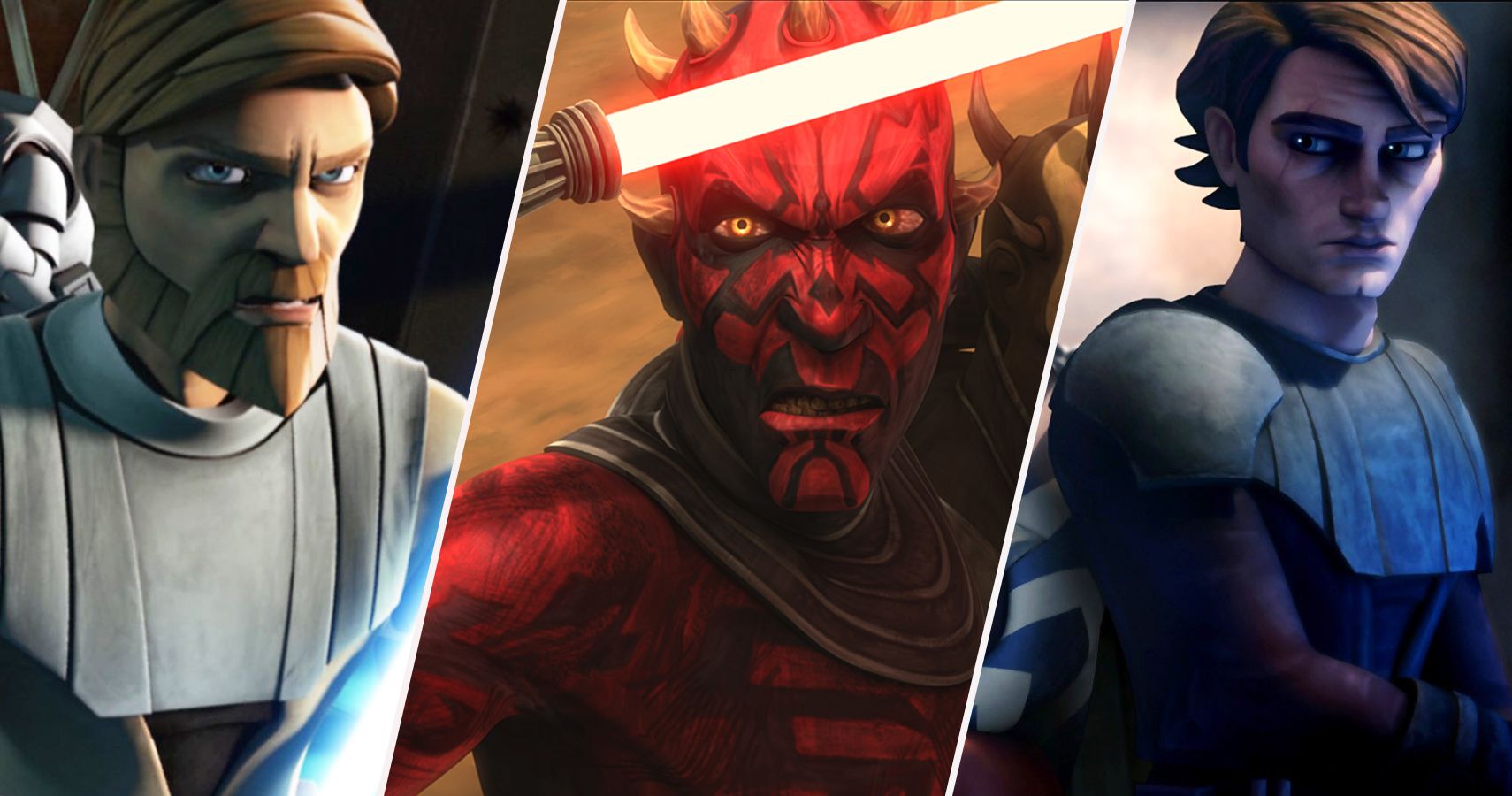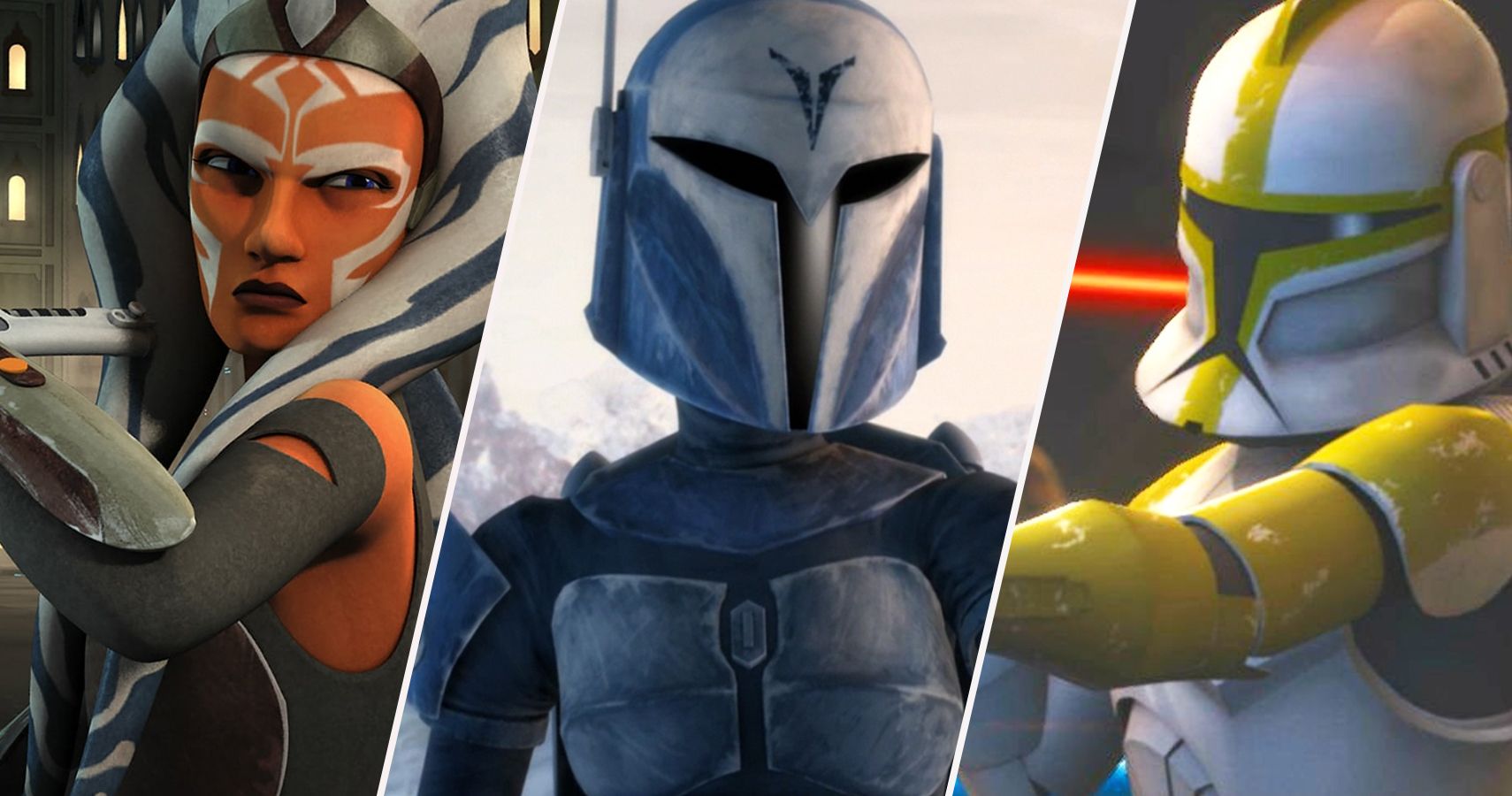For almost a decade, most fans seemed to hate the Star Wars prequels, and it was well known that any self-respecting fan of the Skywalker saga had reserved a special place in hell for The Attack of the Clones. The movies had many issues, from slow pacing to a sharp change in focus from a swash-buckling space-opera to political tragedy, with a lot of romance, hidden plots and feelings thrown in but they didn’t truly deserve the backlash they received. After all, George Lucas never hid the kind of story that he was telling, how he planned to tell it nor how it was going to end.
However, there finally came a day when some of the critics began to come around to the highly divisive films. The hate dissipated, and the fandom found peace with the prequels. The change was largely thanks to Star Wars: The Clone Wars animated show. The series proved to be an essential component of the franchise as it filled in characters that had been barely sketched in the films – from Count Dooku to Darth Maul. But most importantly, it delved into the motivations, evolution, and personalities of characters like Obi-Wan, Anakin, and Padmé; it allowed the audience to get to know what made them tick and gave each of their arcs the space they deserved.
Moreover, The Clone Wars fulfilled the promise of the sequels by showing us in excruciating detail the actual Clone Wars that had been teased in A New Hope, in one of the most intriguing throwaway lines to ever come out of the mouth of Luke. The idea, in 1977, that this was such an advanced universe that they had entire wars revolving around Clones was mind-blowing, and The Attack of the Clones had only managed to deliver the teensiest bit of clone-packed action, and a minimum of the ethical questions that came alongside the idea of believing some humans to be more disposable than others just because they were genetically identical.
It also succeeded in showing a living Galaxy overflowing with different cultures and species. From the Mon Calamari to the Dathomirians, the stakes of the entire saga are better understood when one takes into account the infinite lives that inhabited the different systems and the efforts that The Clone Wars protagonists took to save them.
Binging The Clone Wars feels a little bit like watching a fire brigade trying to extinguish a hundred fires at the same time. This is because the nature of the series is episodic, and it is structured like an anthology. In a way, everything seems to be happening at the same time, in the unstable period when Palpatine's shadow grew larger and larger. The fires are smoke and mirrors orchestrated by the Emperor that distract the Jedi and their allies from the much more sinister plot, but that doesn't make them less critical or diminish the sense of urgency.
And while we generally follow Ahsoka, Anakin, Obi-Wan, and Padmé, The Clone Wars takes dark detours to explore even darker antiheroes -- like Darth Maul and Savage Opress, or the incredible villainess (and woman with more job titles of the Galaxy) Asajj Ventress. Ventress' redemption (of sorts) plays a crucial role in Ahsoka Tano’s downfall, which in turn further upsets Anakin’s faith in the wisdom of the Jedi.
Although the character Ahsoka Tano was created after Revenge of the Sith, by retrofitting her in the timeline, we get a better idea of the consequences of being expelled from the Jedi Order, and Anakin and Padmé’s secret marriage becomes more understandable. After all, if the Jedi Council expelled Ahsoka, who was just a padawan that had taken the best and most moral decision available to her at the time, what wouldn’t they do to Anakin?
Obi-Wan is another character that became so much richer with The Clone Wars and, later, with Rebels. His struggle to stay the perfect Jedi paladin even as he juggled his feelings for Satine, and later his compassion for Anakin’s and Ahsoka’s predicaments fleshed out and humanized Luke’s first teacher and Anakin's master in a way that Ewan McGregor and Alec Guinness -- despite their considerable talent -- couldn’t do for sheer lack of screen-time.
Now Disney + is returning to that era with Kenobi, and it remains to be seen if the events depicted in The Clone Wars and Rebels will change the way Ewan McGregor approaches the role of Obi-Wan.
RELATED: Star Wars: Will The Rise of Skywalker Take Us to the World Between Worlds?
Finally, The Clone Wars and Rebels incorporated two key parts of the puzzle that is the Force: the Gods of Mortis and the World between Worlds. The Gods of Mortis arc can be watched in one sitting, and it is essential to understand the importance of balance and acceptance on a more intellectual, quasi-religious level. The World Between Worlds is sneakier, however. The first time it appears is when Ezra gets his kyber crystal in Rebels, but its significance and qualities are not fully developed until the final season. The Force Awakens, and to a certain extent the force bond in The Last Jedi, teased a return to this magical place that uses the Force to tie together every point in space and time in the Galaxy.
Will The Mandalorian enrich the 30-years-long period between The Return of the Jedi and The Force Awakens in the same way as the animated series did? One thing is for sure: Lucasfilm will be taking fans to a very different level of the Galaxy, one more centered in the gritty realities of the collapse of the Empire than in the mystical aspects of the Force, and we cannot wait for it.



